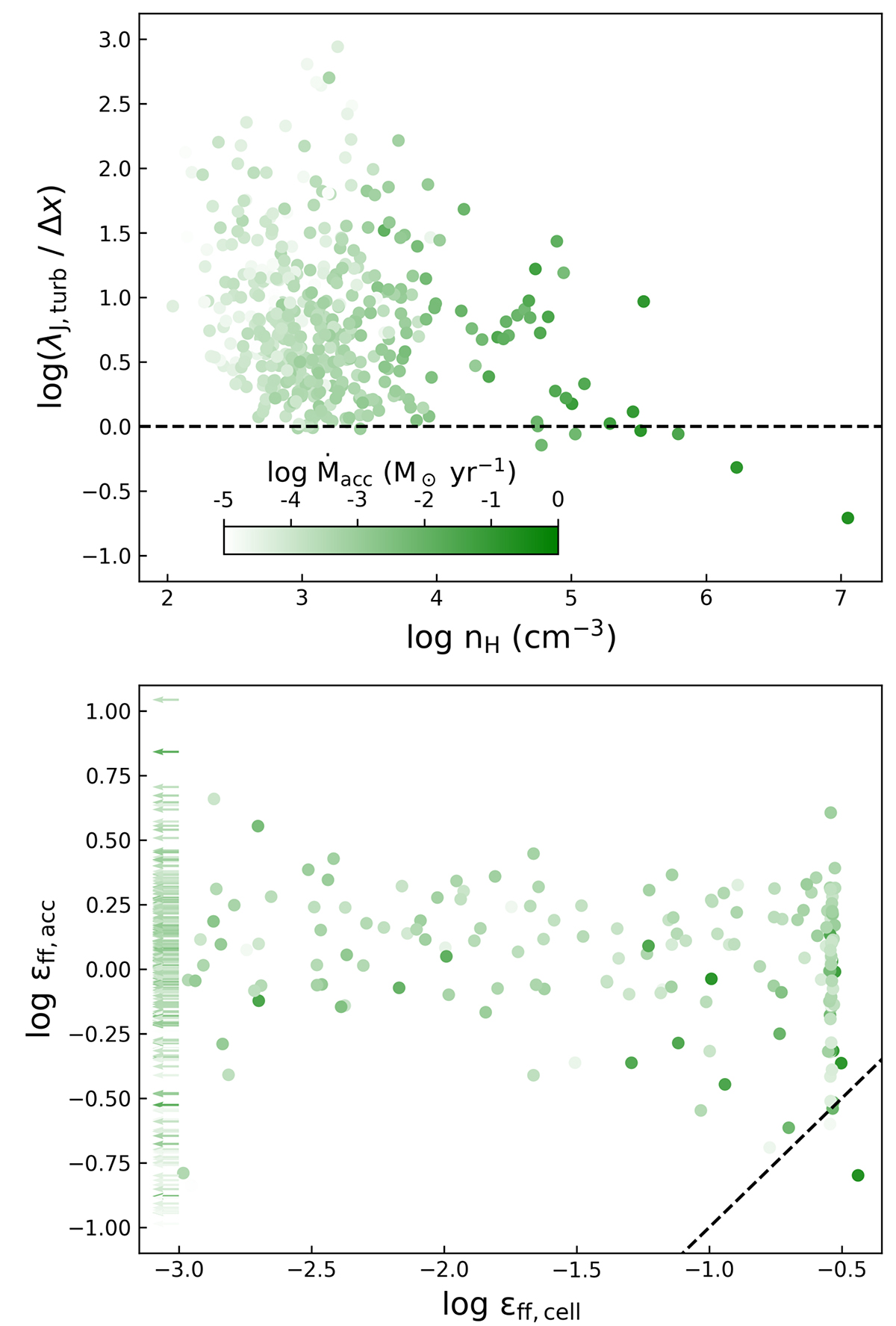Fig. 9.

Download original image
Properties of efficient accretion events. Top: Turbulent Jeans length over cell size (λJ, turb/Δx) versus hydrogen number density (nH) of cells hosting sink particles in SINK-Fid. Note that the sum of gas, stars, sinks, and dark matter particles is used to estimate the total density (ρ) of the host cell when calculating λJ, turb in Eq. (6). We show sink particles with an accretion rate greater than 10−5 M⊙ yr−1 and nH greater than 100 cm−3 from all snapshots. The horizontal dashed line corresponds to λJ, turb = Δx, below which star formation can be triggered in the GTT runs. Bottom: SFEs per free-fall time, measured directly from the accretion rate and gas mass within the accretion zone (εff, acc), versus that derived from the host cell of the sink particle using Eq. (3) (εff, cell). Data points with εff, cell < 10−3 M⊙ yr−1 are represented by arrows. The black dashed line indicates a one-to-one relationship. The color scale represents Ṁacc in both panels.
Current usage metrics show cumulative count of Article Views (full-text article views including HTML views, PDF and ePub downloads, according to the available data) and Abstracts Views on Vision4Press platform.
Data correspond to usage on the plateform after 2015. The current usage metrics is available 48-96 hours after online publication and is updated daily on week days.
Initial download of the metrics may take a while.


